Diptera.info :: Identification queries :: Diptera (eggs, larvae, pupae)
|
larva at seepage > Thaumalea verralli
|
|
| Stephen R |
Posted on 17-11-2010 21:41
|
|
Member Location: Clitheroe Lancashire UK Posts: 2396 Joined: 12.06.09 |
8-9mm, Clitheroe UK, 16 November Same place as http://www.diptera.info/forum/viewthread.php?thread_id=28516 (and possibly same species). I've been observing these in the water film on the limestone retaining wall for a couple of months, and this is the best photo I've got so far. Does it still look like Thaumaleidae? Stephen R attached the following image:  [59.11Kb] Edited by Stephen R on 23-11-2010 18:38 |
|
|
|
| Stephen R |
Posted on 17-11-2010 21:45
|
|
Member Location: Clitheroe Lancashire UK Posts: 2396 Joined: 12.06.09 |
2
Stephen R attached the following image: 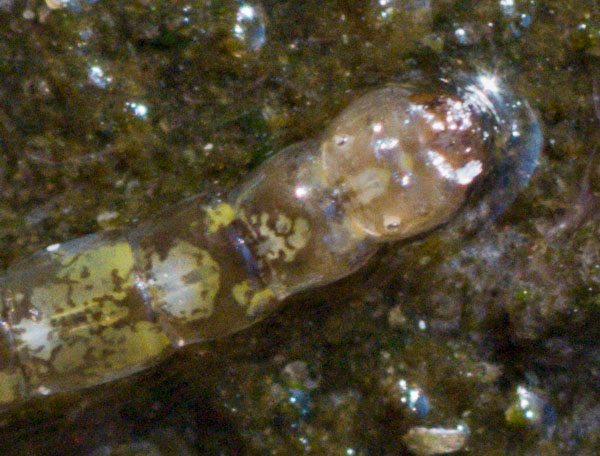 [106.79Kb] |
|
|
|
| Stephen R |
Posted on 17-11-2010 21:46
|
|
Member Location: Clitheroe Lancashire UK Posts: 2396 Joined: 12.06.09 |
3
Stephen R attached the following image:  [77.97Kb] |
|
|
|
| atylotus |
Posted on 18-11-2010 09:59
|
|
Member Location: Amsterdam, NL Posts: 1166 Joined: 29.05.09 |
Dear Stephen I'm convinced that this must be a Thaumalaeidae. Although I can hardly see the head, the purplish spots on the abdomen as well as the detailed photo of the anal segment show a typical Thaumalaeidae. I photoshopped your photo and I marked the bilobed (dorsally placed) anal segment (with the spiracles) as well as the posterior pseudopod in ventral position. To me this is all typical of Thaumalaeidae. atylotus attached the following image: 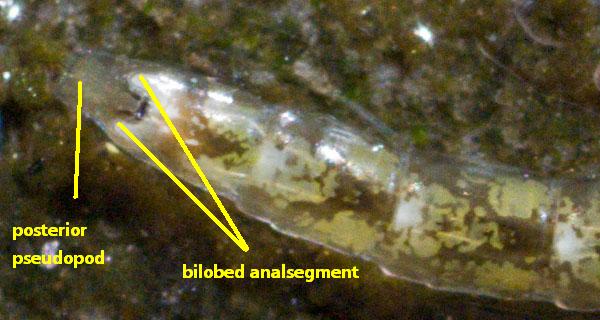 [54.04Kb] Edited by atylotus on 18-11-2010 09:59 |
|
|
|
| Stephen R |
Posted on 18-11-2010 11:27
|
|
Member Location: Clitheroe Lancashire UK Posts: 2396 Joined: 12.06.09 |
Many thanks Ton. It's great to have this confirmed. When is the best time to look for the adults? I don't think I'm likely to be able to rear these from larvae, and I think they disappear between the stones to pupate. Stephen. |
|
|
|
| atylotus |
Posted on 18-11-2010 12:14
|
|
Member Location: Amsterdam, NL Posts: 1166 Joined: 29.05.09 |
Dear Stephen Sorry, but I have no experience in collecting adults or rearing so I will quote Rudiger Wagner (1997) on this: "Life cycles are almost unknown....adults emerge during the entire year, when temperatures in the terrestrial environment are suitable....adults may be collected with a handnet and seem to swarm preferably at sunset. It may also be adequate to use an aspirator." rearing seems to be very difficult but Rudiger gives some hints on this: "...can be kept alive in petri-dishes on some wet substratum (leaves, mosses, liverworth etc.) at low temperatures (6-12 C). Sufficient aeration (circular incision in the cover, closed with plastic gauze!) is necessary. If the dishes are entirely closed, larvae will die of the high humidity." perhaps you can even try an emergence trap in the water just above the water line were you have seen the larva. Good luck. Edited by atylotus on 18-11-2010 12:15 |
|
|
|
| Stephen R |
Posted on 18-11-2010 12:56
|
|
Member Location: Clitheroe Lancashire UK Posts: 2396 Joined: 12.06.09 |
Thanks, I'll keep my eyes open! No chance for an emergence trap, as it's in a public park and the kids would find it. (There's no water line - the habitat depends on rain water seeping though the wall. The surface dries up in fine weather, but it is still damp enough between the stones.) I'll think about trying to rear one using Rudiger's suggestions. |
|
|
|
| phil withers |
Posted on 18-11-2010 14:02
|
|
Member Location: Lyon, France Posts: 521 Joined: 04.03.08 |
As there are only 3 species of Thaumaleid in Britain, and these are keyed in all larval instars I suggest you pickle one and refer to Disney (1999) FBA publication 56. |
|
|
|
| Stephen R |
Posted on 19-11-2010 13:34
|
|
Member Location: Clitheroe Lancashire UK Posts: 2396 Joined: 12.06.09 |
OK, I have a specimen in alcohol. I'm afraid I'm too mean to spend £20 on the book at the moment, so I'm hoping to presume further on your charity. Here are dorsal shots of the head and tail ends. I can do more angles if needed.
Stephen R attached the following image: 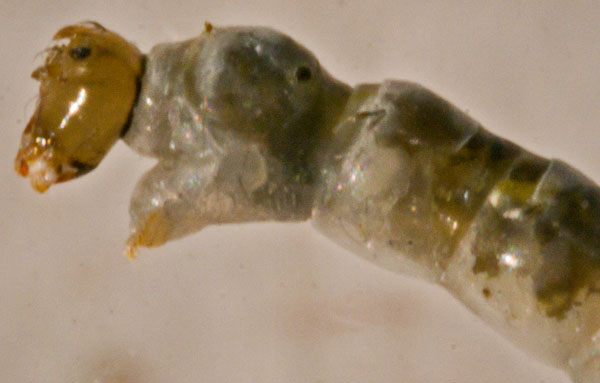 [57.08Kb] |
|
|
|
| Stephen R |
Posted on 19-11-2010 13:35
|
|
Member Location: Clitheroe Lancashire UK Posts: 2396 Joined: 12.06.09 |
5
Stephen R attached the following image: 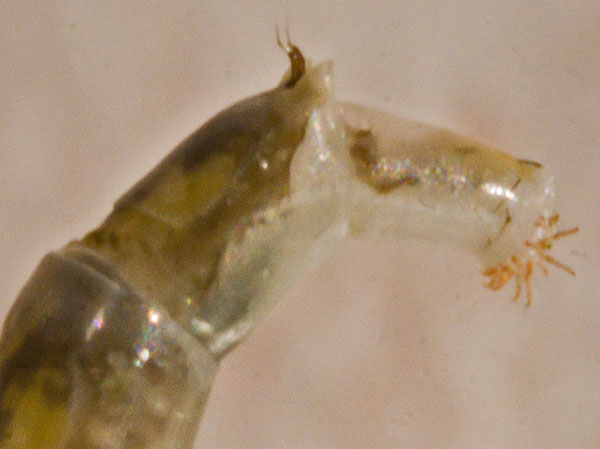 [66.8Kb] |
|
|
|
| phil withers |
Posted on 20-11-2010 22:54
|
|
Member Location: Lyon, France Posts: 521 Joined: 04.03.08 |
Can you do me a higher magnification of the head - the angle is fine ? |
|
|
|
| Stephen R |
Posted on 21-11-2010 12:38
|
|
Member Location: Clitheroe Lancashire UK Posts: 2396 Joined: 12.06.09 |
Thanks for taking this on, Phil. This is about the limit of my photographic skills, but I can see more clearly under the microscope if there's anything I can check further.
Stephen R attached the following image: 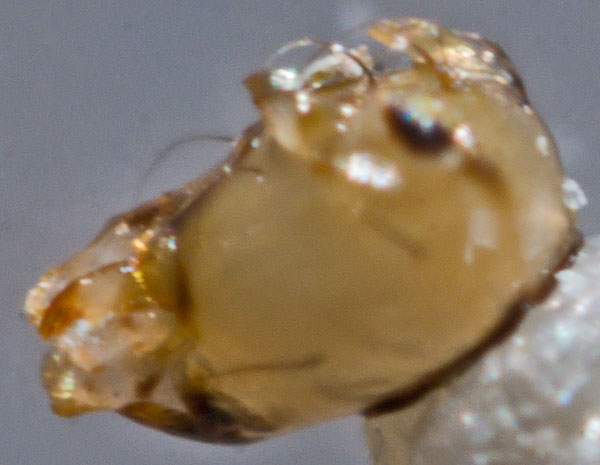 [68.76Kb] |
|
|
|
| phil withers |
Posted on 21-11-2010 13:09
|
|
Member Location: Lyon, France Posts: 521 Joined: 04.03.08 |
Closest I can get with the (slightly) out of focus bits is verralli |
|
|
|
| Stephen R |
Posted on 21-11-2010 14:33
|
|
Member Location: Clitheroe Lancashire UK Posts: 2396 Joined: 12.06.09 |
Thanks again Phil and Ton. Would either of you like a specimen? Send me a PM if so. |
|
|
|
| Stephen R |
Posted on 23-11-2010 18:25
|
|
Member Location: Clitheroe Lancashire UK Posts: 2396 Joined: 12.06.09 |
Now I've had sight of Disney's key (thanks guys  ), I'm sure this is T. verralli. I've tried again without success to demonstrate this in a photo. This dorsal view at least shows that the central projection at the top of the head has side-lobes. With the microscope I can see that the three lobes are pointed enough to match the diagram for verralli. ), I'm sure this is T. verralli. I've tried again without success to demonstrate this in a photo. This dorsal view at least shows that the central projection at the top of the head has side-lobes. With the microscope I can see that the three lobes are pointed enough to match the diagram for verralli.
Stephen R attached the following image: 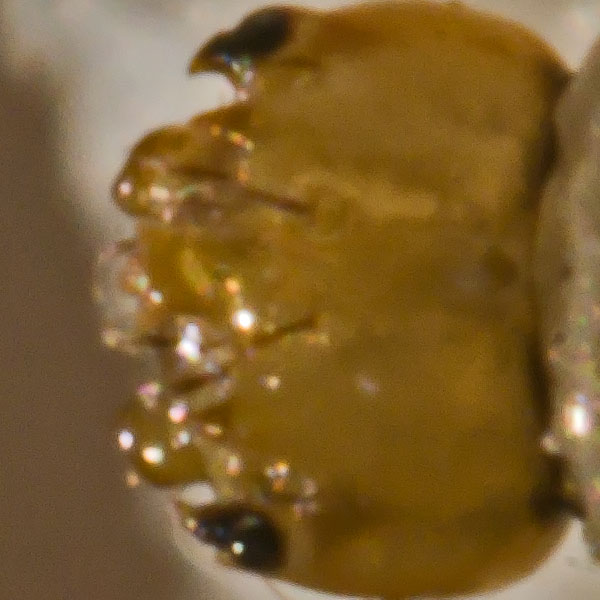 [81Kb] |
|
|
|
| Stephen R |
Posted on 24-11-2010 15:10
|
|
Member Location: Clitheroe Lancashire UK Posts: 2396 Joined: 12.06.09 |
Here is more evidence that these Thaumalea larvae provide an important part of the diet of adult Liancalus virens at this site. L. virens has been present consistently for several months, and I have observed courtship and mating as well as feeding here. Perhaps it is worth looking for Thaumalea larvae whenever Liancalus is found.
Stephen R attached the following image: 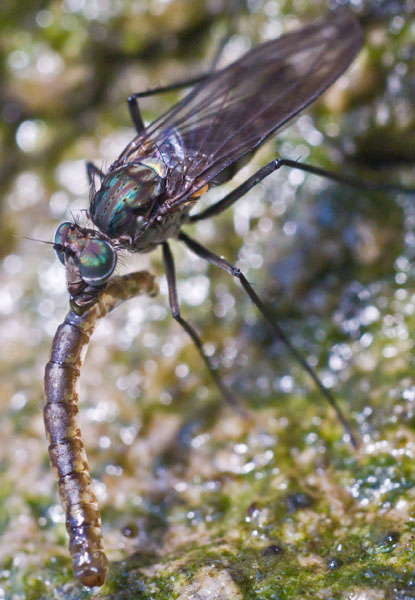 [92.55Kb] |
|
|
|
| Stephen R |
Posted on 24-11-2010 15:12
|
|
Member Location: Clitheroe Lancashire UK Posts: 2396 Joined: 12.06.09 |
I haven't found any juvenile stages of Liancalus yet. Where should I be looking?
Stephen R attached the following image:  [94.5Kb] Edited by Stephen R on 24-11-2010 15:14 |
|
|
|
| Stephen R |
Posted on 14-12-2010 16:48
|
|
Member Location: Clitheroe Lancashire UK Posts: 2396 Joined: 12.06.09 |
http://www.dipter...d_id=35102 shows adult Thaumalea collected here.
Edited by Stephen R on 14-12-2010 16:49 |
|
|
|
| Jump to Forum: |












